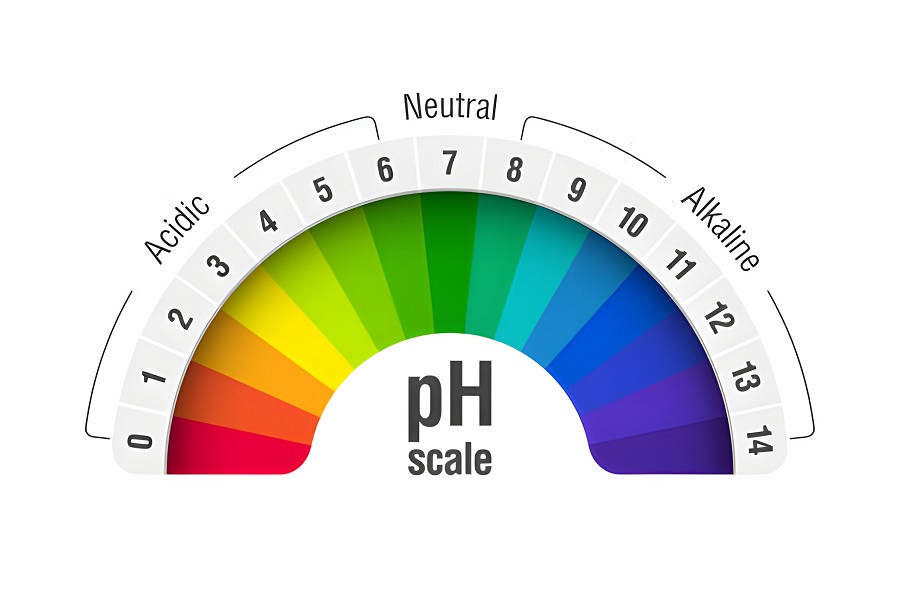Wastewater treatment plants play a critical role in safeguarding the environment and public health by treating sewage and industrial wastewater before it is discharged back into water bodies or reused. One of the fundamental aspects of wastewater treatment is pH control, which involves regulating the acidity or alkalinity of the water to ensure optimal treatment efficiency.
In this article, we delve into the significance of pH control in Wastewater treatment plants, highlighting its importance, and discussing the benefits of monitoring pH levels effectively.
 Why is pH Control in Wastewater Treatment Plants Important?
Why is pH Control in Wastewater Treatment Plants Important?
Optimal Process Efficiency:
pH influences the effectiveness of various treatment processes such as coagulation, flocculation, sedimentation, and disinfection. Maintaining the appropriate pH range ensures that these processes operate efficiently, resulting in the removal of contaminants and pollutants from the wastewater.
Protection of Biological Systems:
Wastewater treatment often involves biological treatment stages where microorganisms degrade organic matter. These microorganisms are sensitive to pH fluctuations, and maintaining a stable pH range is essential for their growth and activity. Deviations from the optimal pH can inhibit microbial activity, leading to reduced treatment efficiency and longer processing times.
Prevention of Corrosion and Scaling:
pH control helps prevent corrosion of equipment and pipelines within the Wastewater treatment plant. Highly acidic or alkaline wastewater can corrode metal surfaces, leading to structural damage and operational issues. Similarly, scaling, caused by the precipitation of minerals, can occur at extreme pH levels, reducing the effectiveness of treatment components such as filters and membranes.
Compliance with Regulations:
Regulatory agencies impose stringent standards regarding wastewater discharge quality, including pH levels. Maintaining pH within specified limits is essential for ensuring compliance with environmental regulations and avoiding penalties or legal consequences.
Protection of Aquatic Ecosystems:
Discharging untreated or poorly treated wastewater with improper pH levels can have detrimental effects on receiving water bodies and aquatic ecosystems. Extreme pH levels can harm aquatic life, disrupt ecological balance, and degrade water quality, impacting both flora and fauna.
Monitoring pH Control
Effective monitoring of pH control in Wastewater treatment plants offers numerous benefits:
Lower Risks of Underfeeding and Overfeeding:
Continuous pH monitoring allows operators to adjust chemical dosages accurately. Underfeeding chemicals can result in incomplete treatment, whereas overfeeding can lead to unnecessary expenses and adverse effects on treatment processes. Monitoring helps maintain the optimal dosage, minimising such risks.
Improved Plant Operation Quality:
Consistent pH control leads to more reliable and efficient operation of treatment units, reducing downtime and maintenance costs. It ensures the plant operates within optimal conditions, maximising treatment performance and overall plant efficiency.
Compliance with Environmental Regulations:
Regular monitoring and maintenance of pH levels ensure that the wastewater treatment plant meets regulatory standards for discharge quality. Compliance with regulations is critical for avoiding fines, penalties, and reputational damage to the company.
Enhanced Productivity:
By optimising treatment processes through pH control, wastewater treatment plants can achieve higher throughput and productivity. Improved process efficiency leads to shorter treatment times, increased capacity, and better resource utilisation, ultimately enhancing overall productivity.
Energy and Water Savings:
Efficient pH control minimises chemical usage and energy consumption, resulting in cost savings for the plant. Moreover, optimised treatment processes reduce water wastage and contribute to sustainable water management practices.
How to Increase and Decrease pH in Wastewater Treatment Plants
Depending on the initial pH of the influent wastewater and the requirements of specific treatment stages, operators may need to adjust the pH either upward (increase) or downward (decrease). Here’s how pH can be adjusted in wastewater treatment systems:
Increasing pH:
Addition of Alkaline Chemicals: To raise pH levels, alkaline chemicals such as lime (calcium hydroxide), caustic soda (sodium hydroxide), or soda ash (sodium carbonate) are commonly used. These chemicals react with acidic components in the wastewater, neutralising acidity and increasing pH.
Carbon Dioxide Stripping: In some cases, where pH adjustment is required to decrease acidity, carbon dioxide stripping can indirectly increase pH levels. By aerating the wastewater to remove dissolved carbon dioxide, the pH tends to rise due to the removal of carbonic acid.
Decreasing pH:
Addition of Acidic Chemicals: Acidic chemicals such as sulfuric acid, hydrochloric acid, or carbon dioxide gas can be added to lower pH levels in wastewater. These chemicals neutralise alkalinity and reduce pH, making the wastewater more acidic.
Carbon Dioxide Addition: In certain treatment processes, carbon dioxide gas can be injected into the wastewater to lower pH levels. Carbon dioxide reacts with water to form carbonic acid, effectively decreasing pH.
What Will Happen If All Alkalinity Is Consumed In the Process?
Alkalinity plays a critical role in buffering pH and maintaining stability in Wastewater treatment plants. It represents the water’s capacity to resist changes in pH when acids or bases are added. However, if all alkalinity is consumed during the treatment process, several adverse effects can occur:
pH Instability: Without sufficient alkalinity, the wastewater becomes more susceptible to rapid fluctuations in pH. Even minor additions of acids or bases can cause significant changes in pH, leading to operational challenges and compromised treatment efficiency.
Corrosion: In the absence of alkalinity, the wastewater tends to become acidic. Acidic wastewater can accelerate the corrosion of metal components within the treatment plant, including pipes, pumps, and tanks. Corrosion not only damages equipment but also increases maintenance costs and risks of system failures.
Microbial Inhibition: Many biological treatment processes in Wastewater treatment plants rely on the activity of microorganisms to degrade organic pollutants. Extreme pH conditions resulting from depleted alkalinity can inhibit microbial growth and activity, reducing treatment efficiency and prolonging processing times.
Impact on Treatment Chemicals: Alkalinity influences the effectiveness of treatment chemicals such as coagulants and flocculants. In alkalinity-depleted wastewater, these chemicals may not perform optimally, leading to poor pollutant removal and decreased treatment efficiency.
To prevent the depletion of alkalinity, it’s essential to monitor alkalinity levels regularly and ensure proper dosing of alkaline chemicals to maintain adequate buffering capacity in the wastewater treatment system.
Choosing a pH Electrode
Selecting the right pH electrode is crucial for accurate pH measurement and control in Wastewater treatment plants. Here are some factors to consider when choosing a pH electrode:
Chemical Compatibility: The pH electrode should be resistant to the chemicals present in wastewater, including acids, bases, and organic compounds. Choose electrodes made from durable materials such as glass or epoxy, with chemical-resistant junctions to ensure long-term reliability.
Temperature Range: Wastewater temperatures can vary widely, and the pH electrode should be capable of measuring pH accurately across the entire temperature range encountered in the treatment process. Consider electrodes with built-in temperature compensation features to correct for temperature effects on pH measurement.
Response Time: Rapid response time is essential for real-time pH monitoring and control. Choose pH electrodes with fast response times to enable quick adjustments and ensure timely corrective actions in the treatment process.
Maintenance Requirements: Opt for pH electrodes that are easy to clean and maintain, with replaceable reference junctions and protective caps to prolong electrode lifespan and maintain accuracy over time.
Compatibility with Monitoring Equipment: Ensure the pH electrode is compatible with the monitoring and control equipment used in Wastewater treatment plants, such as pH meters and controllers. Compatibility ensures seamless integration and reliable operation of the pH measurement system.
We Offer The Best Quality Wastewater Treatment Plant Solutions
Upgrade your sewage treatment plant today with our unparalleled solutions, offering optimal pH balance for superior treatment efficiency. Experience the difference with best-in-class technology and expertise at Cleantech Water.
Contact us at 9558996411 or write to us at Info@cleantechwater.co.in to revolutionise your wastewater treatment process and ensure compliance with environmental regulations. Trust in our commitment to delivering excellence at every drop. Choose us for a cleaner, greener future.

